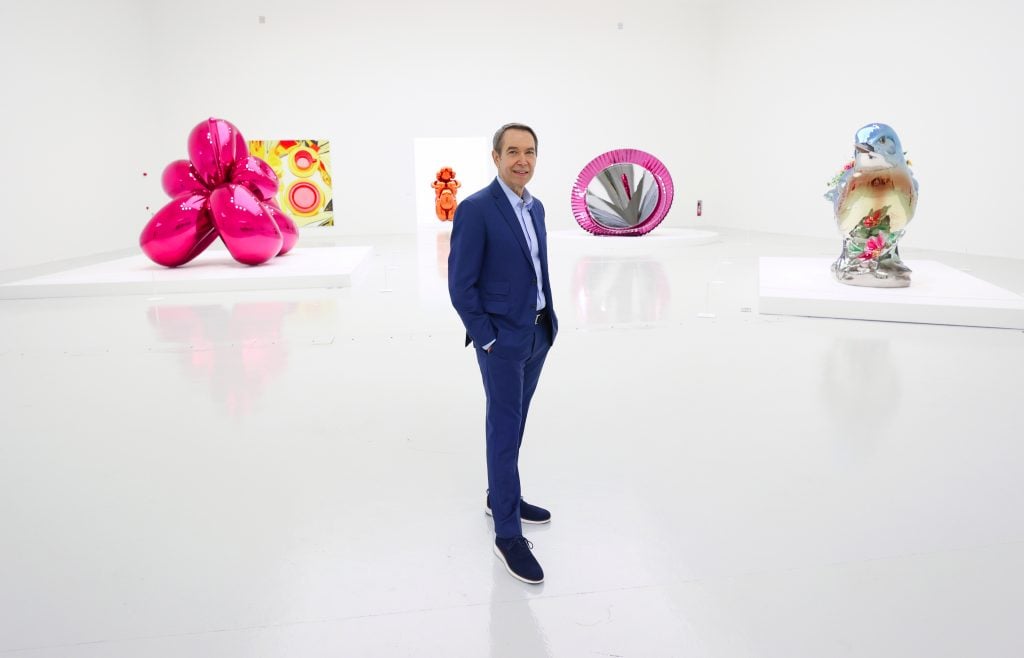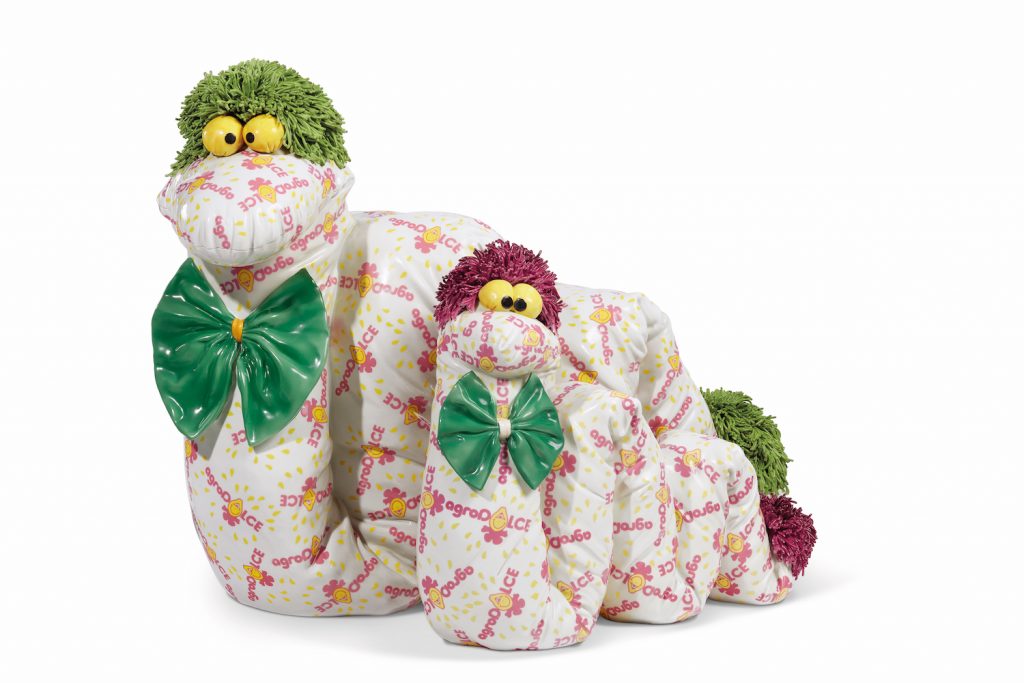In 1991, an Italian collector purchased a cartoonish sculpture of a snake for a few hundred dollars at a property auction in Milan. It turned out to be the work of Jeff Koons.
Or so he thought. Six years later, the collector tried to sell the 34-inch-long porcelain piece at Christie’s but Koons refused to provide a certificate of authenticity, saying the artwork was a fake.
Now, nearly 25 years and several additional legal battles later, the collector just scored a significant victory in an Italian court, where a judge ruled that the sculpture was indeed an “authorized authentic artwork” by Koons, ordering the artist to pay damages to the owner. But Koons is again fighting back.
The most recent court saga dates back to 2016. After the buyer of the sculpture—a 74-year-old Genoan insurance broker whose name has not been made public—was approached by an interested buyer and Koons again refused to issue a certificate of authenticity, he sued the artist for damages. In 2019, a judge ruled in the collector’s favor, but did not order Koons to pay.
That same year, Koons appealed the ruling, trying to overturn the decision. The collector also appealed, trying to secure damages.

Installation view, “Jeff Koons: Lost in America” at Qatar Museums Gallery ALRIWAQ in Doha, Qatar. (Photo by Cindy Ord/Getty Images for Qatar Museums)
The most recent ruling came in the Milan Court of Appeals. This time, the collector got what he wanted, and Koons was ordered to pay damages in an amount that would be decided upon in a subsequent trial.
“We’re highly satisfied with the recent ruling of the Milan Court of Appeals and my client is really happy to finally obtain justice,” said the collector’s lawyer, Marianna Garrone, in an email to Artnet News.
But the battle isn’t over: two months after the most recent ruling, Koons once again appealed. Now the case will be taken up by the Supreme Court of Cassation, Italy’s highest court of appeal.
“We’re pretty confident that this ruling will be confirmed,” added Garrone.
Koons’s studio did not respond to Artnet News’s request for comment.
The sculpture, called Serpents, was made in an edition of three in the late 1980s for Koons’s “Banality” series. It was first shown in 1988 at Galerie Max Hetzler in Cologne, but whether that artwork is the exact piece owned now by the collector remains the subject of debate. (Garrone claims that it was indeed the same sculpture.)
In an interview with the Italian news outlet Corriere della Sera, the collector said he bought the snake artwork blindly at a “customs auction in Milan for unclaimed and uncollected goods.” The starting price, he said, was 500,000 lire.
The buyer didn’t know what he had purchased, nor did he know much about the artist at the time.
“The box was closed, without sender details, and a small inscription: ‘Jeff Koons, Serpents,’” he said. “He wasn’t famous then, but his name was beginning to circulate.”
After researching the artwork, the collector approached Christie’s in 1997 about offloading it. But Koons denied any connection to the object and sued the auction house in New York court, calling the sculpture a counterfeit and demanding that it be destroyed.
At some point during the proceedings, according to the collector, Koons changed his tune, saying that he had indeed created the artwork, but that it was a defective prototype and therefore not salable. In the final ruling, the judge did not order the piece to be destroyed and it was returned to the collector.
A version of Koons’s Serpents sold at Christie’s in 2019 for $711,000. It was consigned by a collector who acquired the piece directly from Galerie Max Hetzler.







